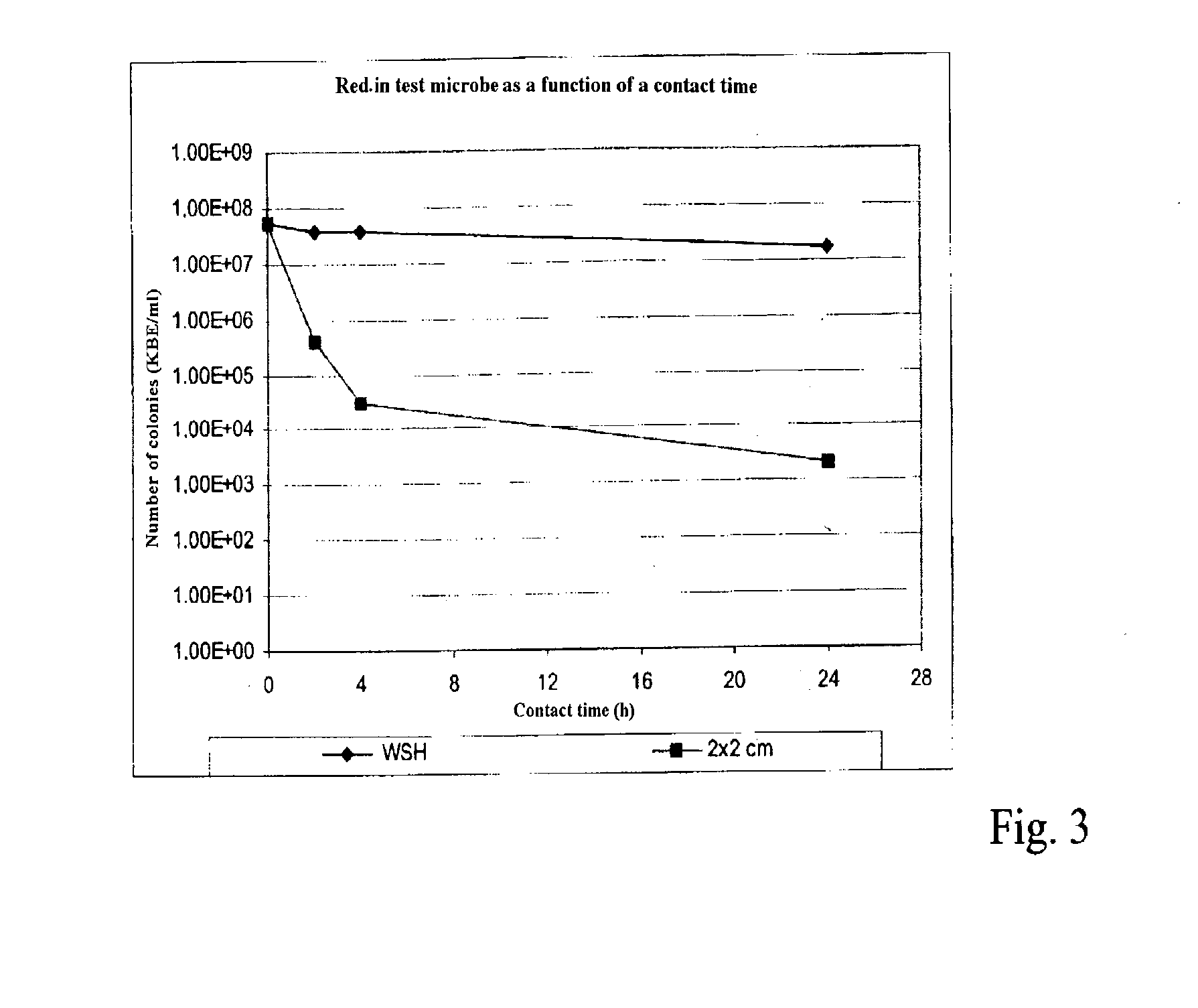Self-cleaning lotus effect surfaces having antimicrobial properties
a self-cleaning, lotus-effect technology, applied in the field of lotus-effect self-cleaning surfaces, can solve the problems of bringing about any noticeable reduction in surface energy, poor surface wetting, and difficult to wet lotus-effect surfaces
- Summary
- Abstract
- Description
- Claims
- Application Information
AI Technical Summary
Benefits of technology
Problems solved by technology
Method used
Image
Examples
example 1
[0064] 20% of methyl methacrylate, 20% of pentaerythritol tetraacrylate, and 60% of hexanediol dimethacrylate are mixed together. Based on this mixture, 2% of Darocur 1173 (UV hardener) and 14% of Amina T100 are admixed. The mixture is stirred for at least 60 min, applied at 50 .mu.m thickness to a PMMA sheet of thickness 2 mm, and permitted to begin drying for 5 min. A mixture made from 99% of Aerosil R8200 with 1% of Amina T100 is then applied electrostatically, and 3 min later a wavelength of 308 nm is used for curing, under nitrogen. Excess particle mixture is removed by brushing. The surface is characterized visually and recorded as +++, meaning that there is virtually complete formation of water droplets and the roll-off angle is less than 10.degree.. Assessment of microbicidal activity with respect to the test microbe Staphylococcus aureus at 30.degree. C. in water of standardized hardness gives a logarithmic factor of 2.08. This is calculated by subtracting the logarithmic C...
example 2
[0065] Using a method based on example 1, the monomers are mixed and the coating procedure carried out. The particles were mixed from 90% of Aerosil R8200 with 10% of Amina T100 and applied electrostatically. The surfaces were characterized visually and recorded as +++. Assessment of microbicidal activity with respect to the test microbe Staphylococcus aureus at 30.degree. C. in water of standardized hardness gives a logarithmic factor of 3.47. This is calculated by subtracting the logarithmic CFU (colony-forming units) values given on the graph.
[0066] The graphs shown in FIGS. 2 and 3 relate to testing of the antimicrobial action of self-cleaning surfaces. These show that a marked reduction in colony-forming units is found on the surfaces produced according to the invention as in examples 1 and 2. The self-cleaning surface of the comparative example has no antimicrobial properties and shows no reduction of the numbers of microbes when compared with the comparative medium (FIG. 1).
[...
PUM
 Login to View More
Login to View More Abstract
Description
Claims
Application Information
 Login to View More
Login to View More - R&D
- Intellectual Property
- Life Sciences
- Materials
- Tech Scout
- Unparalleled Data Quality
- Higher Quality Content
- 60% Fewer Hallucinations
Browse by: Latest US Patents, China's latest patents, Technical Efficacy Thesaurus, Application Domain, Technology Topic, Popular Technical Reports.
© 2025 PatSnap. All rights reserved.Legal|Privacy policy|Modern Slavery Act Transparency Statement|Sitemap|About US| Contact US: help@patsnap.com


